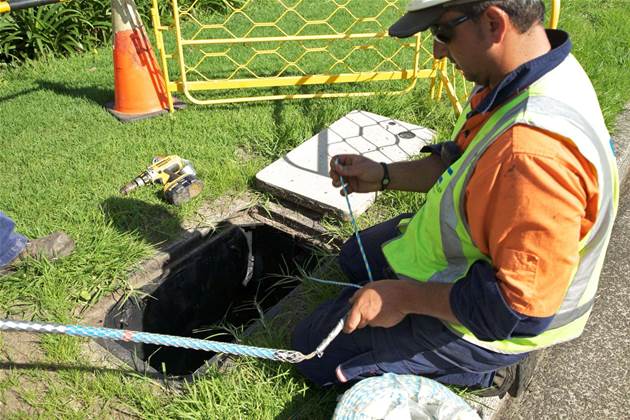This article has been reviewed according to Science X's editorial process and policies. Editors have highlighted the following attributes while ensuring the content's credibility:
fact-checked
trusted source
proofread
NBN could flip 300,000 premises from FTTN to FTTdp
NBN chief executive Bill Morrow has revealed he expects up to 300,000 premises to receive fibre-to-the-distribution-point (FTTdp) coupled with skinny fibre instead of fibre-to-the-node or fixed wireless.

The network builder made the announcement ahead of a 30-premises trial of the technology across two locations in Melbourne and Sydney starting next month.
Unlike fibre to the premises, FTTdp sees fibre run to the front of a customer's premises, with an existing copper cable used for the lead-in.
A distribution point unit, which is powered from a customer house, is used for the fibre-to-copper connection, avoiding the cost of an FTTN cabinet.
NBN chief network operations manager Tony Cross said existing NBN customers would take part in the FTTdp technology trial.
"The way we're selecting it is they already have an NBN FTTP service and that will stay there," Cross said.
"What we will then do is find a spare optical port to put the DPU [distribution point unit] in the pit, turn the reverse power on, and we'll get the data on how that service runs over a period of time."
The test is designed to simulate a longer term deployment, including what happens with a power surge and heat dissipation in the pit over time.
"All of those things are necessary to take to the next step, which will go out to 20,000 or 30,000 homes in an actual construction installation," Morrow said.
Assuming the trials are successful, NBN expects to begin deploying FTTdp to homes during 2017.
"When we look at from 2017 on, we see around 300,000 cases where this is more feasible than FTTN, or in some cases fixed wireless," Morrow said.
"And as soon as it gets faster and cheaper, you get more candidates where it makes sense to deploy."
The FTTdp test deployment follows a recent NBN trial of skinny fibre - which removes the need for the network builder to deploy fibre distribution cabinets - in parts of Ballarat, along with the southern Melbourne suburb of Karingal.
The use of skinny fibre will be an integral part of any FTTdp deployment.
"[The skinny fibre trial] was a test of the construction methodology that will get fibre to the pits, and this test will validate the modem device that's in the pits," Morrow said.
"Then we just have to plug those two [technologies] together and we're done.
"We'll use skinny fibre in new developments, because it's cheaper and faster, but FTTdp will plug into the same port that a [skinny fibre] FTTP deployment would plug into."
According to Morrow, while NBN is not looking at many further skinny fibre FTTP deployments, the technology will be used for FTTdp.
"Almost all of our FTTP brownfield sites are well into the pipe. There's really no new ones that would be applicable to skinny fibre," Morrow said.
"That's why skinny fibre is really a FTTdp solution or a greenfields solution, because most of our brownfields are either done or well along the way."
While deployment costs vary significantly from case to case, on average FTTdp is significantly cheaper than FTTP due to the cost and difficulties involved in deploying new lead-in cables.
"The lead-in FTTP costs $1200 from the street to the home. With a FTTdp DPU we get that down to around $300 today," Morrow said.
"So when we get the increment of [that saving] with the savings from out of skinny fibre, that's how we're able to get to a price that's on average within $450 of FTTN."
However, Morrow noted that FTTdp will not replace FTTN in every case.
"While it's not the mainstay yet, it will be another vital tool in the chest, and we're going to see more of evolution that's going to have variants these types of technologies," he said.
"Every premises is different, especially when you get out to remote areas, and we need more tools in the chest.
"We can speed ahead with the build with a device that gives us more than necessary speeds with the device and also has an upgrade path."
The announcement follows a senate hearing earlier this week, which heard the network builder considered rolling the technology out in place of FTTN 12 months ago.
The proposal was put on ice at that point over concerns about cost and deployment times.
Andrew Sadauskas travelled to Brisbane as a guest of NBN




















